How to ensure hygiene and sanitation in densely populated areas across India to curb coronavirus COVID-19 spread
The best way to prevent and slow down transmission is to be well informed of coronavirus disease.
Trending Photos
)
The government on Tuesday issued detailed guidelines which states, local bodies and communities can adopt, to contain the spread of coronavirus COVID-19, especially in densely populated areas. These guidelines are created specifically for areas where toilets, washing or bathing facilities are shared.
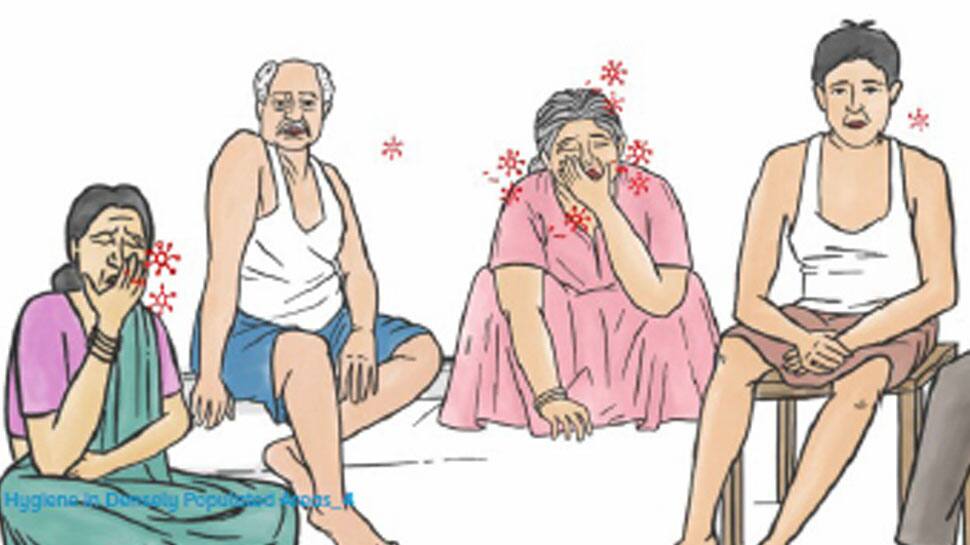
The Coronavirus disease (COVID-19) is an infectious disease caused by a newly discovered coronavirus. Most people infected with the COVID-19 virus will experience mild to moderate respiratory illness and recover without requiring special treatment. Older people and those with underlying medical problems like cardiovascular disease, diabetes, chronic respiratory disease, and cancer are more likely to develop serious illness.
The best way to prevent and slow down transmission is to be well informed of coronavirus disease. The COVID-19 virus spreads primarily through droplets of saliva while coughing or discharge from the nose while sneezing. A person can protect themselves and others from infection by washing their hands frequently, not touching the face, coughing or sneezing into a handkerchief and wearing a mask.
Guidelines on hygiene and sanitation in densely populated areas:
1. Preventive Measures: There is currently no cure available for COVID-19. The most effective way of containing the disease in densely populated areas, where common facilities such as bathrooms and toilets are shared, is to implement measures that can catalyse behaviour change and promote strict adherence to hygiene and sanitation practices. Simple precautions and interventions implemented in a coordinated manner at the community level, by volunteers and authorities can help control the spread of the disease.
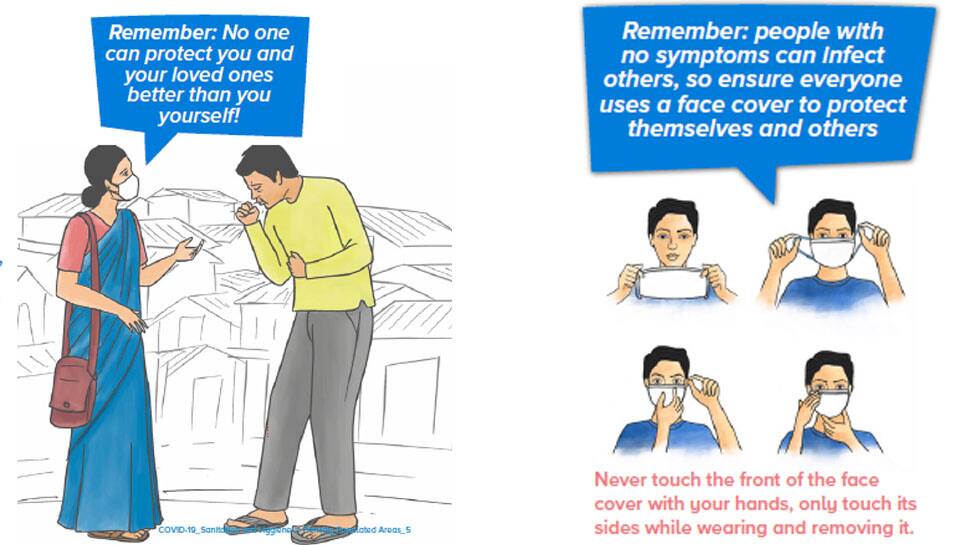
It is important that all patients in the community with ILI (Influenza-like Illness) symptoms such as fever, chills, dry cough, running nose etc. immediately report to the nearest ASHA/Anganwadi/ frontline worker.
Aarogya Setu App for COVID-19: The Aarogya Setu app (available in 11 languages) will alert you if there are COVID cases near you, help you diagnose symptoms and get you medical support.
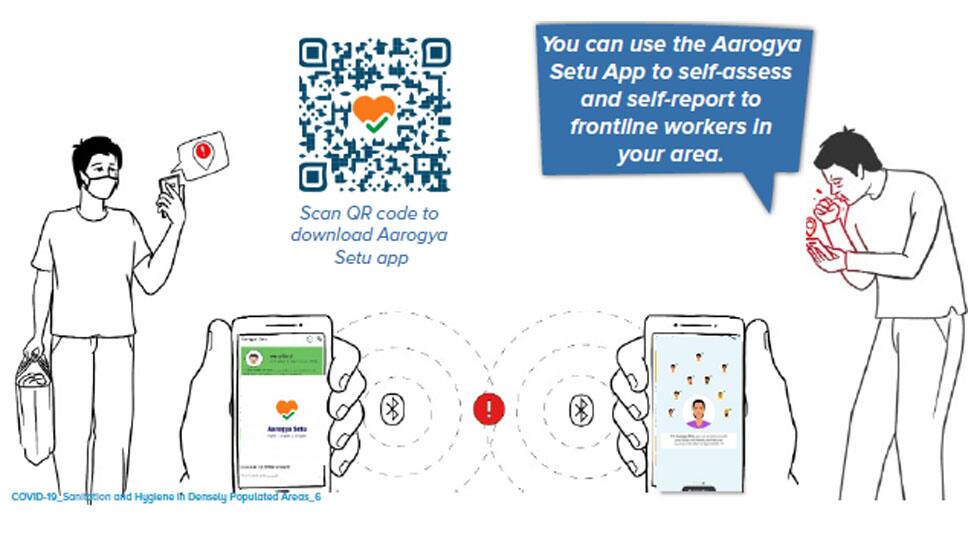
2. Face Cover for Everyone in the Community: All individuals must wear face covers at all times including children older than three years. Ensure everyone has access to 100% cotton reusable face covers and they know how to make and wear them properly.
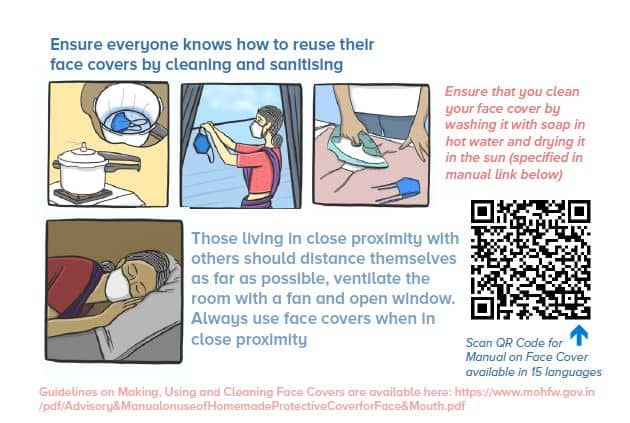
3. Sanitation and Hygiene during HANDWASHING: Common use surfaces such as handles, knobs, doors etc. are a major source of disease spread in a community. It is recommended that foot-operated handwashing stations are installed at all public areas to enable residents to frequently wash their hands. Two designs for affordable and self-assembled handwashing stations are proposed. A third design is recommended for installation in all public/community toilets permanently. These handwashing stations will control the spread of the disease while reducing the amount of water used. To eliminate the use of soap, chlorine can be added to the water.
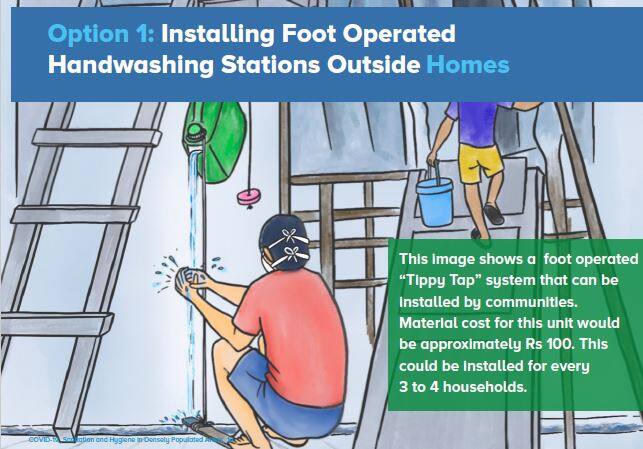
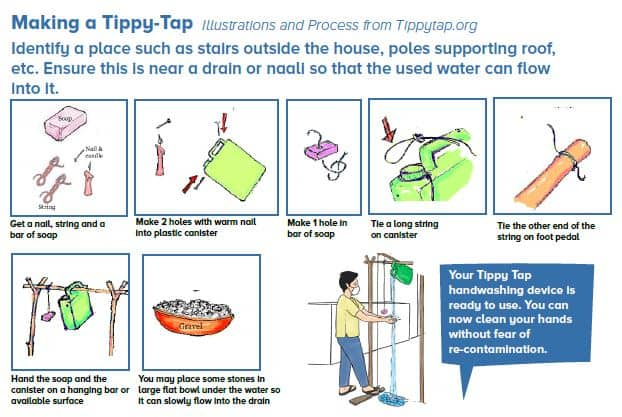
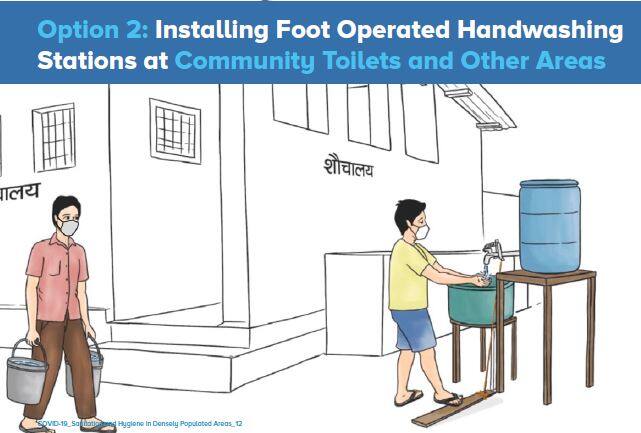
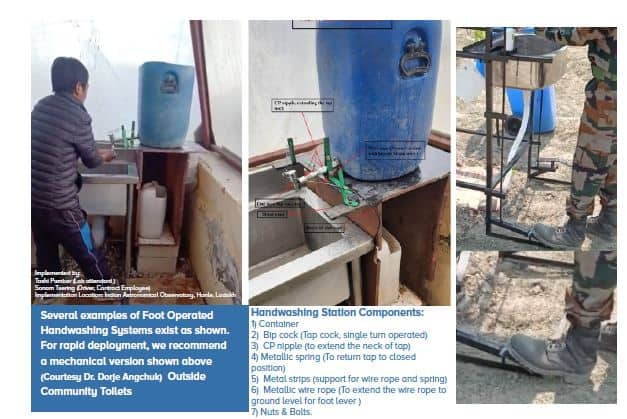
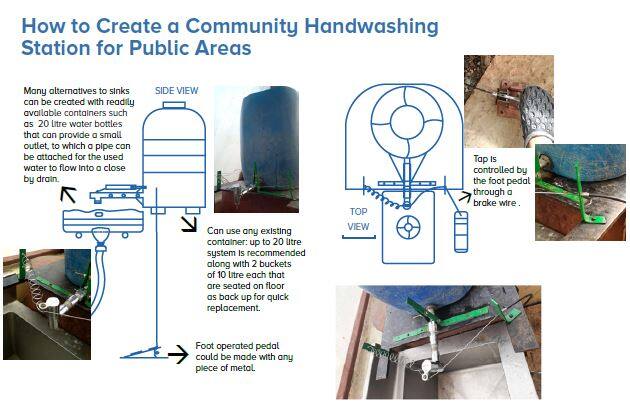
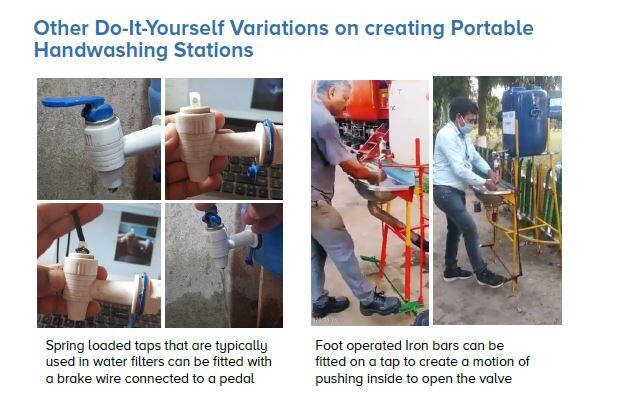
4. Sanitation and Hygiene during TOILET USE: Individuals must not defecate in the open and instead must use the toilet. The toilet must be kept clean after every use. Poorly used or maintained community toilets can serve as a major source of disease. To prevent infection caused by people who do not take proper precautions while using toilets, the following best practices must be observed.
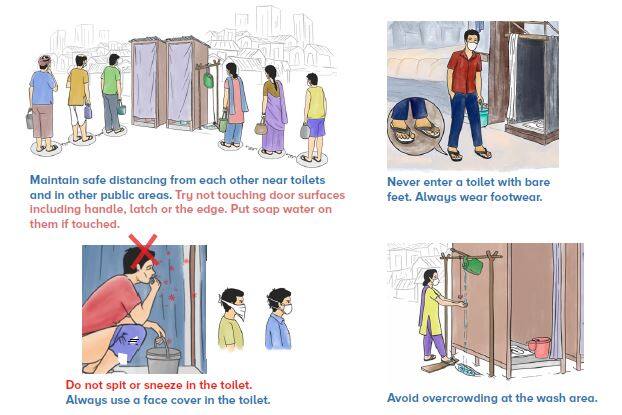
5. Sanitation and Hygiene with DISINFECTANTS:
Authorities and Volunteers: Clean streets, toilets and walls with chlorine-containing disinfectant by thorough floor mopping, spraying or wiping three times a day. The concentration of Chlorine-based Disinfectant Solution to be used: Authorities may consider spray cleaning of specific areas as needed. Authorities may consider providing an alternative to soap-based handwashing, using a chlorine-based hand rub solution, dispersed in controlled conditions in public areas. This measure will reduce the amount of water needed.
* Distribution of cleaning disinfectants can be arranged by community health workers.
*Individuals: Mix 2-3 spoons-full of Phenyl, Chlorine bleach or Lysol available in stores in 5-litre bucket of water and wipe the floor and other surfaces (chair, table, doorknob, switches, etc.) with this water, ensuring that the disinfectant lasts at least 2 minutes at a time on a surface.
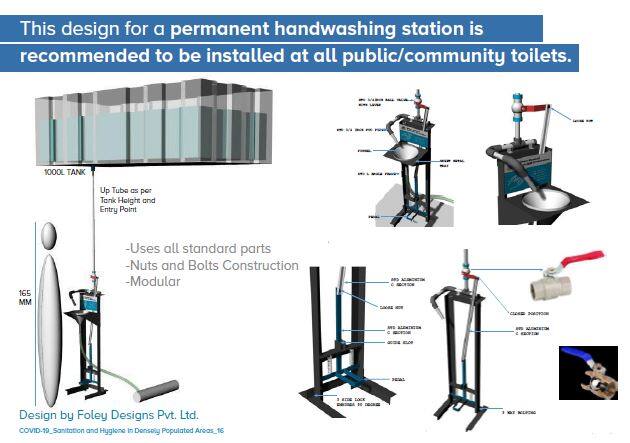
Additional Measures:
a. Thoroughly wash fruit and vegetables before use
b. Always clean milk bags and other packaged food items and related materials with soap water before use
Note: Wastewater surveillance (regular testing of wastewater) can be used as an early warning tool, especially when social distancing measures are lifted.
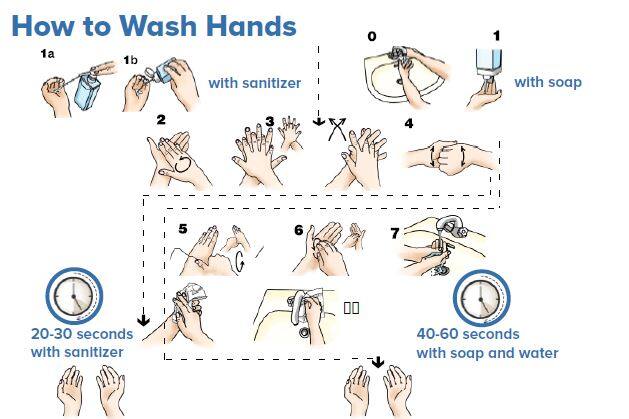
Intensive community outreach and awareness importance of washing hands frequently and social distancing
1. Undertake on
2. Co-manage and maintain
3. Ensure water availability
4. Continually replenish soap and disinfectants
5. Follow all precautions strictly and rigorously
To ensure the sustainability of proposed interventions, authorities and volunteers must ensure the following: handwashing stations with communities to communities and sanitation staff to control the spread of disease
6. It is essential to cooperate with and respect all frontline
Stay informed on all the latest news, real-time breaking news updates, and follow all the important headlines in india news and world News on Zee News.
Live Tv







)
)
)
)
)
)
)
)
)
)
